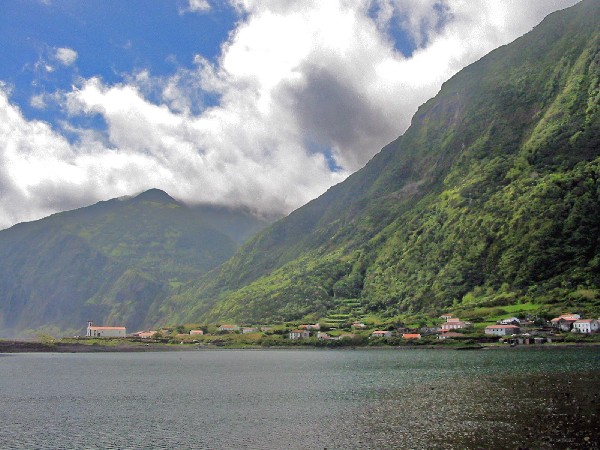This is the last post for the “A” section of the Encyclopedia of Marine Mammals and so the A’s end with an article about Azorean whaling by Richard Ellis. Azorean whaling took place along the shores of the Azores, as you might have already guessed, a set of nine islands located about 900 miles off Portugal’s shore.
This area was visited by American whalers as they traveled along Atlantic currents that pushed them towards Spain and Portugal. But local whalers based in the Azores provide the most compelling story elements for this article because they never adapted to modern whaling techniques despite opportunities to do so.
When other whaling industries were upgrading to steam or diesel powered ships outfitted with exploding harpoons around the year 1900, the Azoreans only upgraded to power boats for towing and two way radios for communicating. Instead of using the power boats for actual whaling, the Azoreans used the power boats to tow their whaleboats, which were “known as canoas, were 38-ft long, and as graceful and seaworthy as the Yankee whaleboats.”
From the cliffs along shore, “lookouts stood watching from dawn to dusk, every day of the year. They used powerful binoculars, which they claimed enabled them to spot whales at a distance of 30 miles.” Once a whale was spotted, lookouts launch rockets to notify whalers who set off on the chase. The canoas were towed out to pursue the whale. Instead of using a harpoon to kill the whale, Azoreans used the harpoon to catch the whale connecting the whale to the boat. The Azores were a favorite area for sperm whales and the main target of the hunt.
Once the sperm whale was harpooned, whalers allowed the whale to drag the boat around for several hours until the poor whale was exhausted. Then the Azoreans would kill the whale with a lance and drag the whale back to shore.
The Azorean whaling industry did pretty well until World War I when market needs began to change. “Sperm whale oil had been used in England and the United States primarily for the manufacturing of fine candles, but by 1910 paraffin was substituted and candles became cheaper.” Sperm whale oil was also used in cosmetics and for medicinal purposes, but very limited. As these demands decreased, whaling in the Azores also decreased.
Over time, whaling became less and less significant in the Azores and in 1976 about 200 sperm whales were killed. Commercial whaling officially ended in 1984. Finally, in the late 1980’s Azoreans realized they could potentially make money off the whales without killing them and launched a now thriving whale watching business.
Wow, you mean people can actually make money off animals without killing them? What a concept, if only we would have thought of that sooner.

[…] to see whales and dolphins. Once hunted, the commercial killing of whales in the Azores ended in 1984. commercial whaling was immediately replaced by commercial whale watching. And Pico is one of the […]